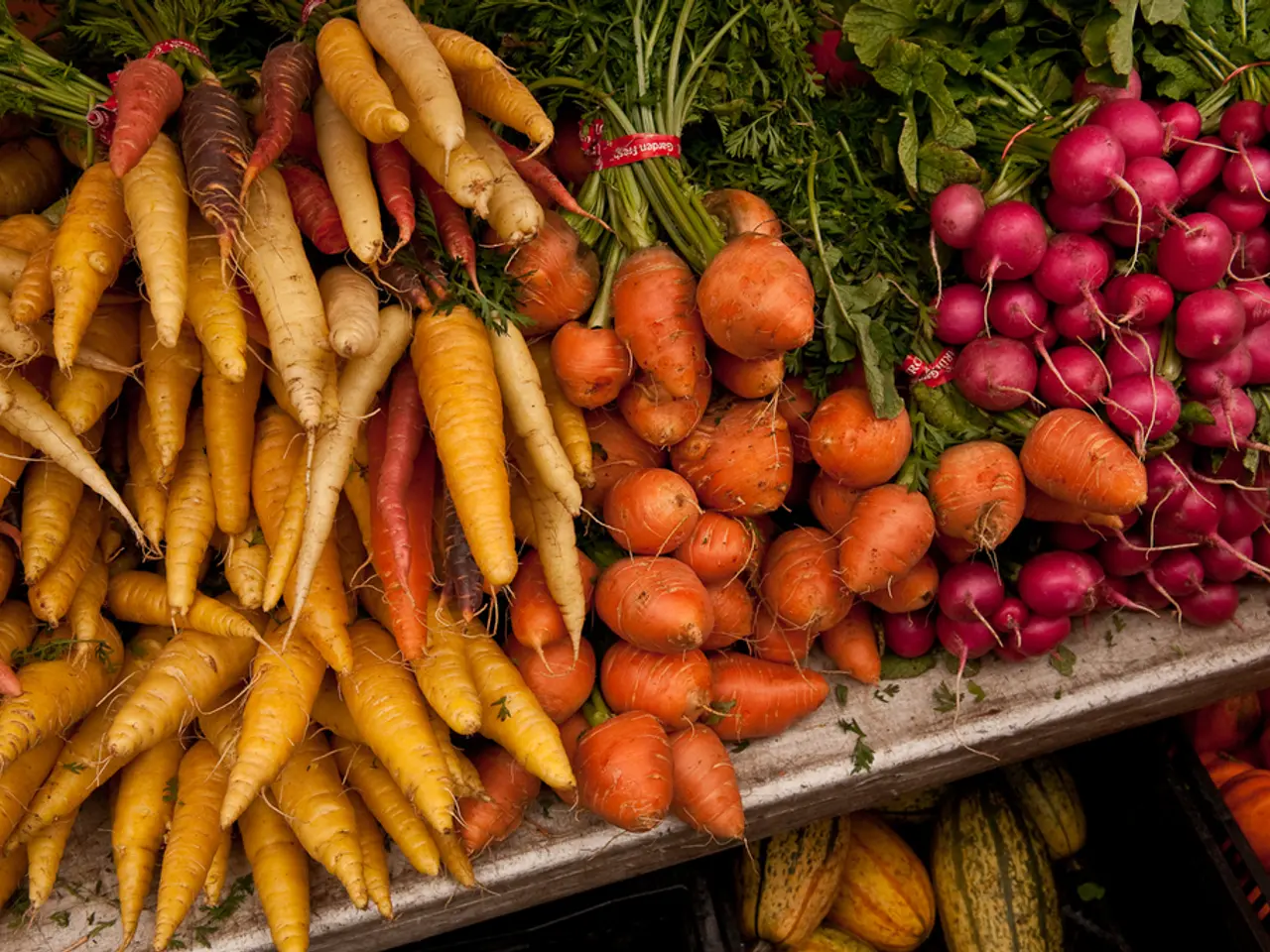Mastering Veggie Garden Production: A Guide for Novices
In the art of cultivating a successful vegetable garden, understanding your climate and microclimate plays a crucial role. Here's a step-by-step guide to help you choose the right vegetables for your garden based on your USDA Plant Hardiness Zone and specific garden conditions.
- Identify your USDA Plant Hardiness Zone: This zone, ranging from 1 (coldest) to 13 (warmest), reflects the typical minimum winter temperatures in your area. Knowing your zone helps you understand the general climate conditions for growing perennials and annual vegetables.
- Classify vegetables into cool-season and warm-season crops:
- Cool-season vegetables thrive in cooler temperatures and tolerate light frost. Examples include carrots, lettuce, broccoli, spinach, onions, and cabbage. They should be planted to mature in the cooler parts of the year.
- Warm-season vegetables need warmer soil and air. Examples are tomatoes, squash, corn, beans, watermelon, and cantaloupe. They should be planted after the last frost and grown in warmer months.
- Match vegetables to your USDA zone:
- Cold zones: Focus on cool-season crops early and later, and warm-season crops at peak summer.
- Mild/warm zones: You can grow warm-season crops for extended periods and grow cool-season crops during mild winters.
- Assess your garden’s microclimate:
- Microclimates are specific conditions in parts of your garden differing from the general zone, affected by sun exposure, shade, wind protection, soil drainage, and moisture.
- South-facing walls or sheltered corners tend to be warmer and suitable for heat-loving plants.
- Shaded or cooler areas are better for cool-season crops or plants sensitive to heat.
- Adjust planting location within your garden based on these microclimate variations to optimize growth.
- Use season-extension techniques as needed:
- Employ row covers, cold frames, shade cloths, or greenhouses to protect plants from frost or extreme heat.
- Mulching and drip irrigation manage water efficiently and protect roots against temperature stress.
- Consider local climate changes:
- Zones may shift due to climate change, allowing the cultivation of crops previously unsuitable or requiring protection adaptations.
By combining knowledge of your USDA zone, vegetable temperature preferences, and your garden’s specific microclimates, you can select vegetables that will thrive and plan planting schedules that maximize yield and plant health. For example, in a warm zone 12 garden, tropical and heat-loving vegetables flourish with proper drainage and humidity control, while shaded microclimates might support cooler leafy greens.
This approach ensures your vegetable garden is tailored to both broad climatic conditions and localized growing environments for optimal success. Some vegetables thrive in shady environments, such as leaf and root vegetables, while others, like cucumbers, are best grown in warm, sunny spots. Green beans grow easily from seeds and prefer full sun and well-drained soil, while tomatoes are easy to grow and can be grown in various environments.
Additionally, consider the layout of your garden. Raised beds deter pests, aerate the soil, prevent compaction, and improve the health of the vegetables. Spot gardening involves planting vegetables in containers and setting them on sunny spots, requiring less planning and maintenance. Planting vegetables in rows can help maximize sunlight and reduce shading from tall plants. Building trellises can help support tall vegetables and prevent shading of shorter plants.
Don't forget to consider companionship in your garden. Basil, for instance, is a fast-growing plant that can be grown from seeds or transplants and pairs well with tomato plants. Swiss chard is a dark, green leafy vegetable that grows easily and beautifully, making any garden look good, and is ideal for container gardening.
With careful planning and consideration of your unique climate and microclimate, you'll be well on your way to a bountiful and beautiful vegetable garden. Happy gardening!
- To achieve the best results in your home-and-garden lifestyle, consider focusing on cool-season crops for cooler zones or shaded microclimates, while warm-season vegetables thrive in sunny, warmer areas.
- Transforming your garden into a productive home-and-garden oasis requires thoughtful planning, including arranging vegetables in rows to maximize sunlight, or using raised beds, containers, trellises, or companionship plants to deter pests, optimize growth, and create an aesthetically pleasing space.




